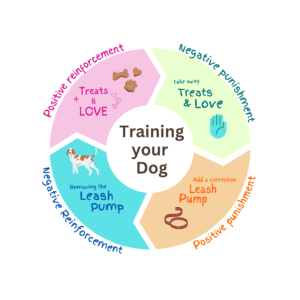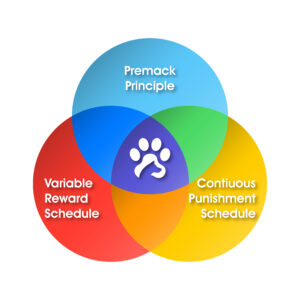Dog training 101
Dog training 101, the basics and where it all stated; and here I don’t have to say, “Do not try this at home”. Why do “professional” dog trainers have this disclosure on their TV shows? Why do other trainers refuse to show what they do? Or better yet fail to be able to explain how they do it? When you know what you are doing and understand the science behind dog training then you should not be scared to show and explain what you do. Nor should you have to tell someone not to do it, true master comes when you can show one, do one and teach one. To be able to explain something in its simplest manner is a sign of someone who understands what they are doing and no mimic something they read or saw.
How do dogs learn?
A few years back a psychologies asked the same questions he set out to answer that; his name was B.F Skinner. His studies and finding would forever change the way we look at behaviors and how to teach new behaviors to animals. For the purpose of Dog Training 101; we will use the summary from Lumen Learning :
Operant conditioning is based on the work of B. F. Skinner. Operant conditioning is a form of learning in which the motivation for a behavior happens after the behavior is demonstrated. An animal or a human receives a consequence after performing a specific behavior. The consequence is either a reinforcer or a punisher. All reinforcement (positive or negative) increases the likelihood of a behavioral response. All punishment (positive or negative) decreases the likelihood of a behavioral response. Several types of reinforcement schedules are used to reward behavior depending on either a set or variable period of time.
Using a set command structure (dogs name–command–Condition reinforcer such as good boy/girl) the dog learns when it hears its name it will be asked to do something and when it complete that command it will get a reward. The first steps are to teach the dog with is expected for each command; we do this through luring, prompting, shaping and chaining. Once the dog understands what the command means we can move on to fading off the lures and prompts. This is all done in a controlled environment, with minimal to no distractions. Now that the dog can perform the command with no prompts or lurers, we can work on an reward schedule and teaching the dog to stay in the command. For more details on the reward schedule please click here.
A variable reward schedule paired with a conditioned reinforcer is extremely powerful. I want you to think what is the deference between a vending machine and a slot machine? You put money into both, you press a button and something happens. The only deference is the vending machine is a fix ration schedule, meaning every time you push a button after you put money in you know for the most part an item is coming out. Very boring, that is why people get upset when they press the button for the chips and they stop just short of falling out. However, a slot machine is playing on your psychology and dopamine (feel good hormone). The lights and sounds are like the good boy/girl in a variable reward schedule. You brain gets a little hit of dopamine each time this keeps the person playing for hours. This is the same concept we use with training before we introduce corrections or positive punishment; the other half of operant conditioning.
What is Positive and Negative Punishment?
For this definition we will use simplypsychology.org definition
-
Positive Punishment:
- Positive punishment involves adding an aversive stimulus or something unpleasant immediately following a behavior to decrease the likelihood of that behavior happening in the future.
- It aims to weaken the target behavior by associating it with an undesirable consequence.
- Example: A child receives a scolding (an aversive stimulus) from their parent immediately after hitting their sibling. This is intended to decrease the likelihood of the child hitting their sibling again.
-
Negative Punishment:
- Negative punishment involves removing a desirable stimulus or something rewarding immediately following a behavior to decrease the likelihood of that behavior happening in the future.
- It aims to weaken the target behavior by taking away something the individual values or enjoys.
- Example: A teenager loses their video game privileges (a desirable stimulus) for not completing their chores. This is intended to decrease the likelihood of the teenager neglecting their chores in the future.
For Dog Training 101 positive punishment in 2nd phase is a leash pump, it does not hurt the dog. You dog should not yelp, go into fight or flight mode. It is designed to be annoying, slightly more motivational then the distractor. We teach the dog what the correcting means, how to escape it and then how to avoid it all together. Before moving onto higher distractors and real world training in 3rd phase. In 3rd phase we introduce e-collars so work on off leash training under extremely high distraction.
What is a Distractions in Dog Training?
A distraction is anything more motivational then what is being offered to the dog as a reward. In 2nd and 3rd phase we teach the dog they have to obey regardless of what is more motivational around them. This is true dog obedience, not simple bribery.
This is dog training 101. When you understand classical conditioning how organisms learn you can teach a dog almost any command. When you understand Operant conditioning you can get a dog to preform under higher and higher levels of distractions; what I is referred to as competing motivators. The dogs motivation to obey vises the dog wanting to disobey. When you have an understand of this and how to apply it to dog training, you can set the dog up for success and they can learn. It is not that hard, nor does it require you to fight with your dog or cause your dog pain. When animal is in pain or threatened they go into fight or flight, that is never an expectable place for dog training. A dog will not learn in that mind set.
If you are wanting to work with a trainer that understand how you dog learns and how to teach them contract us today.
Cited
McLeod, S. (2024, February 2). Operant conditioning: What it is, how it works, and examples.

Operant Conditioning | Introduction to Psychology – Reinke. (n.d.). Courses.lumenlearning.com. Retrieved July 21, 2024, from https://courses.lumenlearning.com/suny-fmcc-intropsychmaster-2/chapter/operant-conditioning/#:~:text=Skinner.

